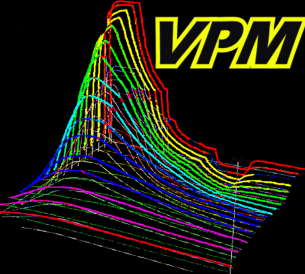|
|
Varying
Permeability Model
|

| |
VPM Decompression Program DownloadsThe programs available on this site were the first bubble model programs to be used for sport mixed-gas decompression diving. They were the original deep-stop decompression programs used by technical divers. First used for oxygen-driven decompression from air and nitrox diving in 1992, VPM field deployment predated release of commercial deep stop programs such as GF-driven Decoplanner in 1998, or most recently, the RGBM-based GAP in 2003. A lot has changed over the past decade, and deep stops are now standard ascent procedure. For my own decompression diving, I use commercial VPM-B based software available on the VPM Links page. In many senses, the programs on this site are obsolete for computing diving ascents. I have not actively worked on the code since 2000, and they do not implement the multi-diving extensions to the VPM that David Yount, Erik Baker, and I detailed in our publications. Nonetheless, if you are interested in how a decompression calculation is made, I hope that the programs prove useful in illustrating the links between inputs, intermediate computations, and ultimately the output of a decompression schedule.
The current state-of-the-art in VPM calculations is Erik Baker's open source code FORTRAN program, which incorporates many of the issues we explored during our collaboration with Prof. David Yount. Erik has done further work on the VPM algorithm, with VPM-B, the latest version. Erik's source code is available from the VPM Links page. Just the Facts! In all cases, the source code list is available rather than just
compiled programs, so in addition to observing the differences between
ascents calculated by the VPM and traditional supersaturation models (ie:
nearly every other publicly available decompression program), you can
compare the algorithms. Full Mixed Gas VPM Decompression Program Requires the Mathematica program to run, but can be viewed with a free reader. Decompression schedules can be calculated for multiple inert gasses, as well as for dives into the impermeable regime. Prior to my tek95 presentation, I dived 60 dives based on trimix, air, nitrox, and oxygen gases, with decompression schedules calculated by this program. BASIC and VBA Programs BUG ALERT: The following BASIC
programs should have the minimum ascent time set to a value > 0 for
non-decompression dives. This does not affect any calculation that
displays a decompression time > 3 min. When using the BASIC nitrox programs, adhere to the following model assumptions when making inputs:
Excel VPM.xls (Visual Basic for Applications) A graphical interface is used with an excel spreadsheet for I/O into this VBA program. You need the full installations of Excel 8.0/Office '97 or Excel 9.0/Office 2000 for this to run. Excel RebreatherVPM.xls (Visual Basic for Applications) The VPM algorithm adapted to closed circuit diving using the same VBA program as VPM.xls. You need the full installations of Excel 8.0/Office '97 or Excel 9.0/Office 2000 for this to run. The Original VPM.txt (DOS BASIC) The text version of this file is the most straight-forward of the VPM programs --regardless of whether you run the program, the code list should be the easiest to understand. The program has a DOS interface, and runs on the Microsoft program QuickBASIC.
Please let me know if you find inconsistencies, have problems running a program, etc. I'll do my best to incorporate suggestions and pass on information via this page.
| |
